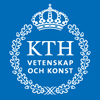 |
KANDIDAT EXAMENSARBETE IN MATHEMATICS;
ALGEBRA AND GEOMETRY
SA140X, 15hp, SPRING 2010
|
On this page you will find information specific for the course SA140X, with specialization towards Algebra and Geometry. General information about the course is found here, and general information about specialization in mathematics is found here.
|
COURSE STRUCTURE
The course SF2729, Groups and Rings, is given every spring. Students not familiar with the course material of SF2729 are advised to follow this course in order to get sufficient theoretical background to take the course SA140X. In that case the student will after period 3 (January-March) be given a project by the lecturers of SF2729. Note that the course SA140X (the Kandidat Examensarbete) can be taken in parellel with the course SF2729.
Students that are familiar with the basic concepts of groups and rings, are not supposed to follow the course SF2729. These students are encouraged to contact Mats Boij and Sandra Di Rocco at an early stage to discuss projects and to get the needed background material for their particular project. Email addresses are provided below.
|
EXAMPLES OF PROJECTS FOR KANDIDAT EXAMENSARBETE
Below we give a brief description of possible projects. Students that decide to specialize in one of the listed projects will be given a much more detailed description concerning goals, aims, reading material as well as working schedule.
RUBIK'S CUBE. This famous toy was originally designed to exemplify the complexity of finite groups. Which group is actually visualized with the Cube, and which normal subgroups does it have? are some questions to consider. Click here for much more information and generalizations.
AUTOMORPHISMS OF PLANE CURVES. Given a plane curve, it is interesting to study the group of transformations of the plane that fix the curve. This is especially true over fields of positive characteristic, where large infinite and/or non-reduced automorphism groups occur.
MÖBIUS GROUP. The Möbius transformations are automorphisms of the sphere. The sphere is identified with the plane and a point at infinity, and as such the Möbius transformations are the length preserving transformations of hyperbolic geometry. Click here for further reading.
GAUSSIAN INTEGERS. By combining the integers and the square root of -1, one obtains the Gaussian integers. This integer lattice of the complex plane is only one of many possible ones. Other lattices have unexpected behaviour, which raises several natural questions. More information is available here.
APPLICATIONS OF PROJECTIVE GEOMETRY TO COMPUTER VISION Projective geometry represents an important area in modern geometry, extending the
basics of Eucledian geometry. Recently it has become an important tool in more
applied disciplines like computer vision. More information, containing
references to online literature can be found here.
CONJUGACY OF MATRICES A matrix encodes the information about a linear mapping, and it is important to understand the conjugation. In particular if the two matrices are conjugate over a given field, or ring, and the coefficients of the matrices belong to a subfield, are the two matrices then conjugate over the smaller field?
p-GROUPS One of the results that we encounter in the course Groups and Rings states that every group consisting of p squared elements, for a prime number p, is an abelian group. Groups where the number of elements is a prime power, is a p-group, and such groups are well studied. It would be interesting to find elementary results characterizing the structure of p-groups of low prime powers, as e.g. three and four.
|
THE GROUP IN ALGEBRA AND GEOMETRY
Here you will find a list of the present member of the research group in Algebra and Geometry. An idea of their research interest can be obtained by looking at the list of master thesis completed in Algebra and Geometry, and the list of examined Ph.D's. More specific details about the research interests can be found from their individual homepages, and by looking at their arXiv listings.
|
CONTACT PERSONS
During spring of 2010 Mats Boij and Sandra Di Rocco are the contact persons for the course SA140X. If you are considering taking SA140X, with a specialization towards Algebra and Geometry, please do take contact at an early stage.
Mats Boij, boij@kth.se
Sandra Di Rocco, dirocco@kth.se
Roy Skjelnes.
|



 |
Sidansvarig:
Roy Skjelnes
|
|
